The BlackBerry PlayBook Review
by Anand Lal Shimpi on April 13, 2011 9:00 PM EST- Posted in
- Tablets
- Smartphones
- RIM
- BlackBerry
- PlayBook
- Mobile
I suppose it's fitting that I should be the one to write our PlayBook review. Before Android and the iPhone, there were two mobile platforms/devices that I was hugely fond of: the Palm V and my BlackBerry. In fact, it wasn't until the iPhone that I finally let go of my last BlackBerry - moving on from the email era into the smartphone age.
Today's BlackBerry is of course very different than the devices I used in college. And the PlayBook is unlike anything RIM has ever done.
I don't believe any tablet maker has perfected the formula just yet. I made that abundantly clear in our review of the iPad 2. While you can't argue that Apple is the forerunner in the smartphone based tablet space, over the long term I still believe this is anyone's game. Remember, the leaders in the early days of the PC industry weren't the ones who ultimately dominated the mature market.
What follows is our review of RIM's first attempt at building a tablet. The PlayBook is far from perfect, but there's a foundation here that can be built upon if RIM has a good roadmap and good execution. And if you're a BlackBerry user, there's a lot of synergy to exploit.
| BlackBerry PlayBook Pricing Comparison | |||||
| 16GB | 32GB | 64GB | |||
| WiFi | $499 | $599 | $699 | ||
Let's get to it.
The Hardware
If we view the primary difference between the first and second generation of smartphone based tablets as being ergonomics and performance, the PlayBook falls squarely in between the two.
At 10mm thick the PlayBook (7-inch display) is more iPad 1 (9.7-inch) or Xoom (10.1-inch) than iPad 2 or Galaxy Tab 8.9, but what RIM lacks in thinness it makes up for in overall size. The PlayBook is an almost-pocketable tablet. Bigger than the 5-inch Streak and even bigger than the 7-inch Galaxy Tab, the PlayBook isn't a pain to port around. The PlayBook is small enough to snugly fit inside the outer pocket of a long men's winter coat or a lady's purse. While I definitely don't carry my iPad everywhere, if it were more functional I could see carrying the PlayBook with me more often than any other tablet.
The PlayBook's styling is modest, even for BlackBerry standards. The front has a single BlackBerry logo along the bottom bezel and a visible camera lens but that's it. Around back you've got RIM's logo, a larger lens for the rear-facing 5MP camera sensor and a sea of black.
The only buttons on the device are along the top of the PlayBook: power, volume down, pause/play and volume up. The power button is flush with the surface of the PlayBook's edge. You basically need a pointy finger nail (which I typically don't have) to press it easily and as a result the power button was pretty much useless to me. If you can manage to hit it the power button will lock the PlayBook, otherwise you'll have to leave the tablet idle until it automatically goes into standby. RIM tells me that final versions of the PlayBook will have this power button raised by 0.8mm, enough to make it easily clickable.
Press and hold the power button and you'll be greeted with a PC-like choice to either power off the PlayBook or restart it. I'm not sure how frequently RIM expects you to do the latter, but when testing it's a nice feature to have.
The volume up/down buttons work as expected, although the volume level itself doesn't seem to be very linear. There's a single 1/8" headphone jack up top, near a port for the PlayBook's microphone.
The PlayBook features a pair of pretty loud stereo speakers on the front of the device. Being used to the iPad's single speaker, the PlayBook's two speakers are nice.
Charging is always an issue on these USB devices. You can take Apple's approach and charge over USB, which unfortunately can take a while to fill up a tablet's battery. You also run into issues with older computers that don't support the USB Charging spec, resulting in charging-only-while-sleeping like the iPad. Then there's Motorola's approach with the Xoom where you don't charge over USB but have a dedicated port for an AC adapter. Charging times are significantly reduced but now you need to carry around an extra adapter with you wherever you go. RIM arrived at what's quite possibly the best solution. The PlayBook will charge over USB and it also features a higher amperage quick-charge port for use with some of its accessories.
The battery is of course not removable and there's no USB port or SD card reader.
The Form Factor
The PlayBook is only slightly larger than Samsung's 7-inch Galaxy Tab and maintains the same 7-inch screen size (albeit with a functional border around the screen). Given my complaints about current tablets not being incredibly portable compared to a smartphone, you'd think that I'd love the PlayBook's form factor. To be honest, for portability, I do.
| Tablet Specification Comparison | |||||
| Apple iPad 2 | BlackBerry PlayBook | Motorola Xoom | |||
| Dimensions | 241.2mm x 185.7mm x 8.8mm | 194mm x 130mm x 10mm | 249.1mm x 167.8mm x 12.9mm | ||
| Display | 9.7-inch 1024 x 768 | 7-inch 1024 x 600 | 10.1-inch 1280 x 800 | ||
| Weight | 601g (WiFi only) | 425g | 730g | ||
| Processor | 1GHz Apple A5 (2 x Cortex A9) | 1GHz TI OMAP 4430 (2 x Cortex A9) | 1GHz NVIDIA Tegra 2 (2 x Cortex A9) | ||
| Memory | 512MB | 1GB | 1GB | ||
| Storage | 16GB up to 64GB | 16GB up to 64GB | 32GB + microSD card | ||
| Pricing | $499 up to $829 | $499 up to $699 | $599 - $799 | ||
While I'm almost never tempted to bring the iPad with me when I'm going around town, the PlayBook is a far easier sell. It's almost pocketable (and actually pocketable if I'm wearing a big jacket) and isn't too heavy.
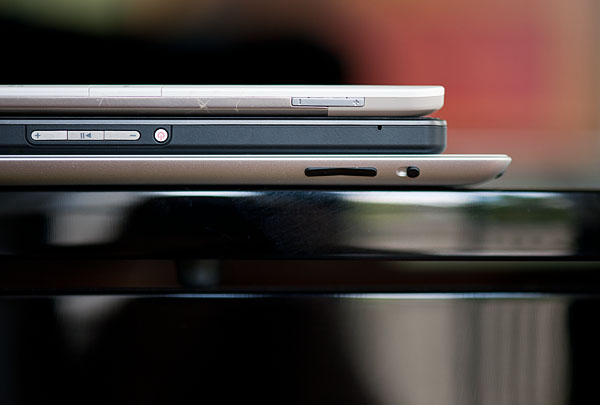
From top to bottom: Amazon Kindle 2, BlackBerry PlayBook, Apple iPad 2
Even when I'm not out and about, the PlayBook is quite usable as a content consumption device. In portrait mode fonts are a bit too small for me to read comfortably on the couch but in landscape it works well as a reddit browsing machine.
It's in the couch-lounging usage model that the PlayBook does fall short of the iPad or Xoom. But in terms of portability the PlayBook is clearly a much better balance of functionality and mobility. If you read between the lines you'll come to the same conclusion I have: neither the PlayBook nor the iPad is the perfect form factor for a tablet. Further more, I'm not sure there is a single perfect tablet form factor.
Apple tends to be a one-size-fits-all company when it comes to iOS. You want a smartphone? That'll be a 3.5-inch screen on an iPhone. Want a tablet? 9.7-inch iPad. It's interesting given how carefully Apple selected its four notebook sizes: 11, 13, 15 and 17-inches.

Clockwise: Apple iPad 2, Amazon Kindle 2, BlackBerry PlayBook in Convertible Case
Ultimately I don't think tablets will fall into the one-size-fits-all category. Instead I believe they're ultimately headed for some sort of a convergence with netbooks or notebooks. Today that's difficult to see because they lack a common hardware ISA, OS and even apps, but you don't have to look too far into the future to see those problems going away.
While I appreciate the PlayBook's portability and would definitely carry it around more than an iPad, it's not as nice to use laying back on a couch. The screen is too small to comfortably read in portrait mode and even in landscape things can get a bit cramped.
RIM's market research shows a clear preference for portability, hence the PlayBook's introductory 7-inch form factor. However RIM also pointed out that the BlackBerry comes in all shapes and sizes, indicating that the PlayBook would ultimately be available in different form factors as well. RIM also indicated that the 7-inch PlayBook may not be the smallest size offered either. Clearly RIM views the tablet market much like the notebook market: there will be ultraportables and there will be workhorses, with tons of choice in between. The 7-inch PlayBook is merely a starting point. Assuming RIM can fund the projects, we'll likely see both larger and smaller siblings in the future.


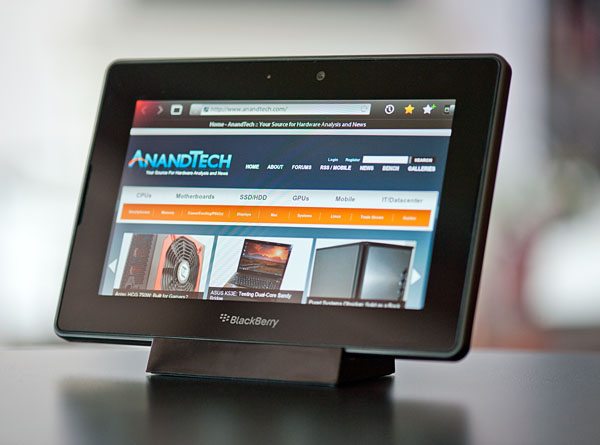
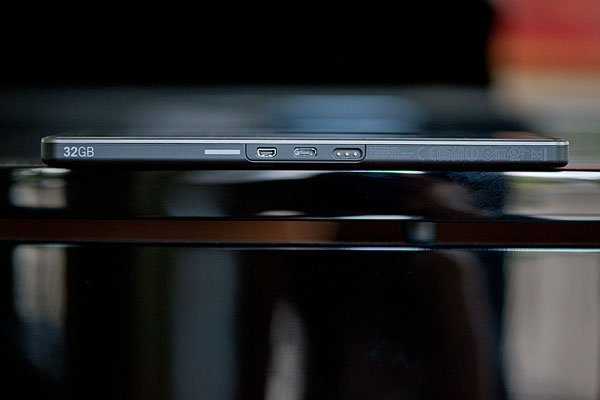
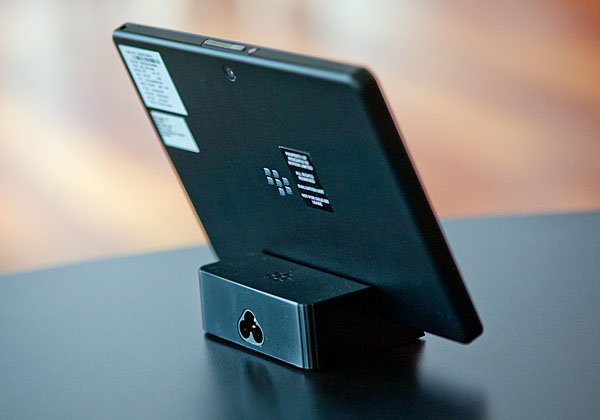
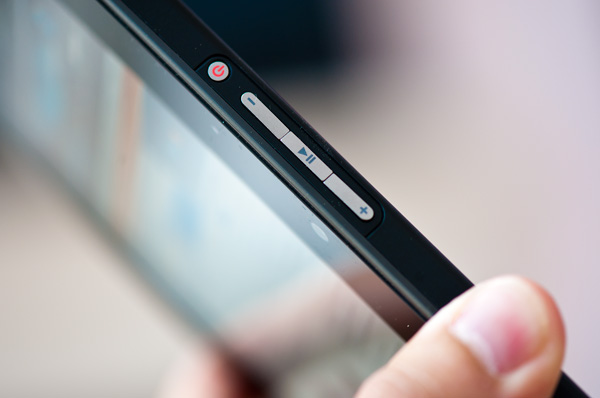
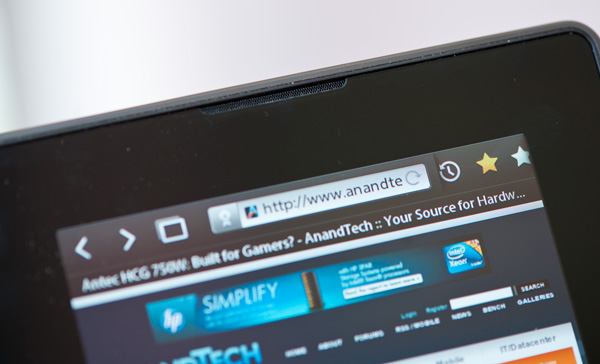








77 Comments
View All Comments
name99 - Friday, April 15, 2011 - link
"I am starting to doubt the iSupply numbers you quoted."And I am starting to doubt that your contrary opinions are of much value.
"Their memory prices are also highly suspect, clinging to $2/GB for what are still really small drives compared where higher performing SSDs already are."
(a) The price here is for STORAGE, not memory as you call it.
(b) The issue is that Apple wants flash that is low power, not high performance. This probably means that want flash that works at low voltage.
This is not trivial --- as evidenced by the fact that pretty much EVERY SSD vendor is incapable of shipping a drive that can write reliably at USB power levels.
If the market for low power flash is different from the market for high performance (and high peak power) flash, then comparing prices as you are doing makes no sense.
MonkeyPaw - Wednesday, April 13, 2011 - link
That is kinda sad. I find the tablet market a bit of a mystery still. The hardware is either loaded and expensive, or cheaply made junk. The software is still in limbo. I wanted to try a tablet without much risk, so I ended upgetting a Nook Color and a microSD card and went through the mod community. If all fails, its still a good dreaded, but its actually been a lot of fun trying all the mods. Can't wait to see a good build of HC for it, as the prerelease build isn't too bad already. A prefect tablet? No, but the specs are decent, the screen is great, and the cost was very acceptable. :)MonkeyPaw - Wednesday, April 13, 2011 - link
LoL. Dreaded = e reader. Nice spell check android! :Deliotw - Wednesday, April 13, 2011 - link
They are clearly prioritizing the corporate market that is their bread and butter. I'd never buy this for myself but the "too big to fail" bank I work for could deploy these quickly with the bridge features. That wouldn't be possible with iOS or Android. This isolation capability is impressive but I it still seems like they are releasing it with too many things missing.Spivonious - Thursday, April 14, 2011 - link
For business users yes, but I think most home users (aka non-techies) use web mail and wouldn't be too bothered.PeteH - Thursday, April 14, 2011 - link
The problem is that RIMM appears to be primarily targeting business users. Maybe their thinking is that business users will have their Blackberry on them anyway, making an application unnecessary, but it seems like a big oversight to me.galuple - Thursday, April 14, 2011 - link
It's a corporate security thing. Corporate types very serious about security. No email client means that if one of these gets lost, it doesn't have sensitive documents on it since it's all on the blackberry.Kiddo2050 - Thursday, April 14, 2011 - link
I could care less. This is aimed at Blackberry users as of now, and I am one. With Blackberry Bridge this is a none issue.Sorry, but I just can't go for Apple and it's closed app eco system (the AOL of today). I've had numerous apple products (everything except the ipad in fact) and I just got so sick of plugging everything into iTunes. Just tired of that company ripping me off left right and center. Here's the "New" Macbook Pro, yes it's already out of date in terms of specs but you don't care because it's Apple. Sure my Blackberry phone is not cutting edge but the point is no one at RIM pretends it is. The iPad2 was rolled out as the hotest new tablet and they didn't say anything about the RAM which was sub par - "just don't tell our consumers they won't know." No thanks Steve, iPad2 and Apple = FAIL start caring about your customers instead of screwing them every chance you get.
zephyros - Thursday, April 21, 2011 - link
it's true but so wat? apple came out without cut and paste before...why is everyone so surprised? it's how they fix the issue and how fast that matters. at least they know about it and came out mentioning it instead of letting customers find out themselvesEthaniel - Wednesday, April 13, 2011 - link
... great job, Anand.